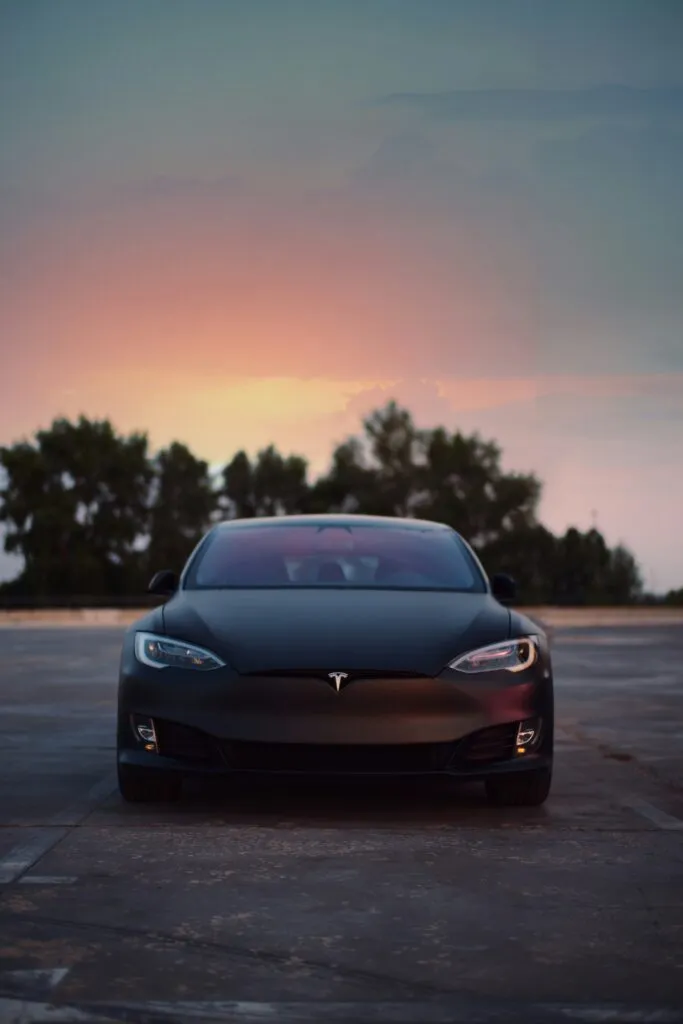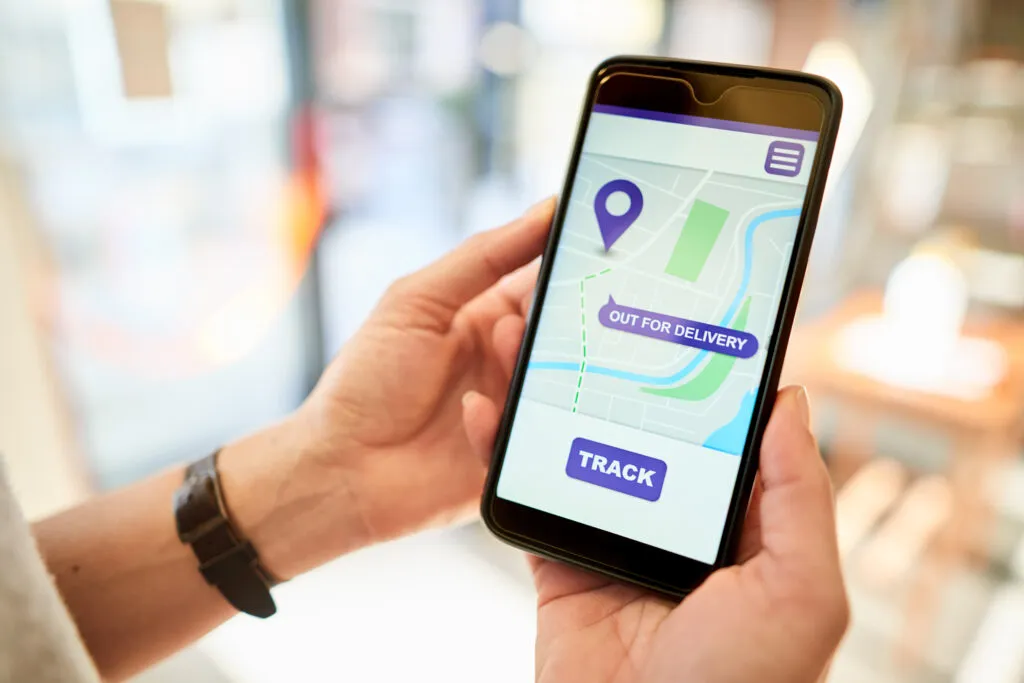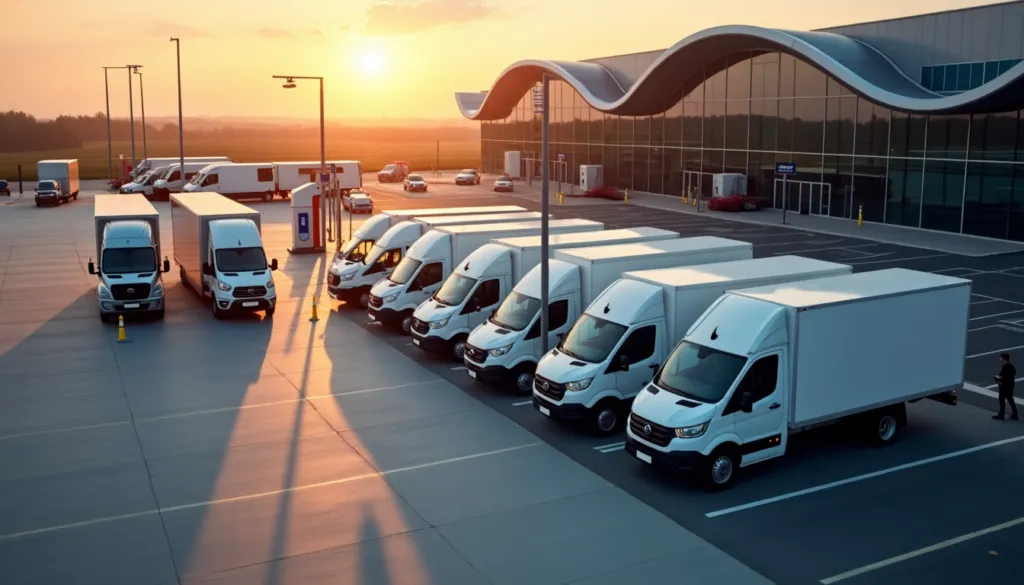
Get home early with RoadWarrior.
Enter your stops, optimize your routes, manage your team – quickly and efficiently.
Try RoadWarrior free for 7 days
Try free for 7 daysAs someone who owned their Tesla for a year and consistently used the Tesla Route Planner, Tesla’s route planner offers numerous advantages that make it a valuable tool for Tesla owners, but of course there are some drawbacks in terms of every day use. Overall it’s a great tool and I still use it daily, but there are some situations where I do end up having to use different GPS apps to supplement the Tesla’s route planner. Let’s explore some of the pros of using this innovative feature.
1. Optimized Charging Stops
One of the major benefits of Tesla’s route planner is its ability to factor in charging station locations and durations. This ensures a smooth journey with minimal stops, as the route planner calculates the most efficient charging points along your route. With this feature, you can easily plan your trips, knowing exactly where and for how long to charge your vehicle. This not only saves you time but also eliminates the stress of searching for charging stations during your journey. Additionally, if you set your destination to a Tesla charging station, it will automatically start warming up the battery to speed up your charging time which means less delays.
2. Real-Time Information
Tesla’s route planner provides real-time information on various factors that can affect your journey. It offers updates on traffic conditions, allowing you to avoid congested routes and potential delays. Moreover, the route planner takes into account current weather conditions, enabling you to plan for rain, snow, or other adverse weather events. Additionally, the feature even considers elevation changes, helping you anticipate any challenges that might affect your vehicle’s performance. With this wealth of real-time information, you can make informed decisions and adjust your route accordingly. However, it is important to consider your preference for driving. If you are someone who would rather take a more direct route, you may find yourself deviating from the navigation instructions.
3. Integration with Supercharger Network
Tesla’s route planner seamlessly integrates with its extensive Supercharger network. This means that the route planner prioritizes charging stops at Tesla’s Supercharger stations, which provide significantly faster charging speeds compared to other charging options. This integration ensures that Tesla owners can conveniently access the Supercharger network, enabling them to charge their vehicles quickly and efficiently. The ability to rely on a well-established network of charging stations adds a level of convenience and peace of mind for Tesla drivers.
Cons of Tesla’s Route Planner
While Tesla’s route planner offers many advantages, it’s important to consider its limitations as well. Let’s take a closer look at some of the cons associated with this feature.
1. Inaccurate Estimated Charging Times
Some Tesla owners have reported inaccuracies in the route planner’s estimated charging times. This can be frustrating, as it can lead to longer travel times than anticipated. It’s important to keep in mind that charging times can vary depending on various factors, such as battery level, temperature, and charging station usage. However, it’s worth noting that Tesla continuously works on improving the accuracy of its route planner’s estimations through regular software updates. I personally haven’t dealt with inaccurate charging times and I’ve even felt that charging was quicker than I anticipated and had to cut my Netflix episode short to be back on my journey.
2. Over-Reliance on Certain Charging Stations
Another limitation of Tesla’s route planner is its tendency to over-rely on specific charging stations. This can sometimes result in deviations from the most direct route, as the route planner prioritizes these stations over others. While this may not be a significant issue in areas with a dense Supercharger network, it can be problematic in regions with fewer charging options. It’s advisable to cross-reference the route planner’s suggestions with other charging stations available along your route to ensure optimal efficiency. I thankfully live right by several charging stations so I haven’t come across this issue myself.
3. Limited Road Closure and Construction Consideration
Tesla’s route planner may not always account for road closures or ongoing construction projects. This means that you might encounter unexpected detours or delays that the route planner did not anticipate. It’s essential to stay updated on road conditions and be prepared to make manual adjustments to your route if necessary. Relying solely on the route planner’s suggestions without considering external factors can potentially lead to inconvenient and time-consuming detours.
The Accuracy of Tesla’s Route Planner
The accuracy of Tesla’s route planner is a crucial aspect to consider when relying on this feature for your journeys. While the route planner generally provides reliable estimations and suggestions, it’s important to understand the factors that can affect its accuracy.
As mentioned earlier, charging times can vary based on several factors, such as battery level, temperature, and charging station usage. Tesla’s route planner takes these factors into account when estimating charging times, but there may still be instances where the estimations are not entirely accurate. It’s advisable to consider these estimations as rough guidelines and be prepared for potential variations.
Furthermore, road conditions, traffic, and weather can also impact the accuracy of the route planner’s suggestions. While the feature provides real-time information on these factors, unexpected changes can occur during your journey. It’s essential to stay alert and be flexible in adjusting your route if needed.
Tesla acknowledges the importance of accurate route planning and continuously works on improving its route planner’s performance. Regular software updates address these accuracy issues and enhance the reliability of the feature. By leveraging user feedback and advanced technologies, Tesla strives to provide Tesla owners with the most accurate and efficient route planning experience possible.
Comparing Tesla’s Route Planner to Other GPS Systems
When considering Tesla’s route planner, it’s natural to compare it to other GPS systems available on the market. Let’s explore how Tesla’s route planner stacks up against other navigation options.
1. Charging Station Integration
One significant advantage of Tesla’s route planner is its seamless integration with the Supercharger network. This integration allows Tesla owners to access a vast network of fast-charging stations conveniently. In contrast, many other GPS systems do not prioritize or integrate charging station information, leaving Tesla owners to rely on external resources for this crucial aspect of their journeys.
2. Real-Time Information
Tesla’s route planner stands out with its ability to provide real-time information on traffic, weather conditions, and elevation changes. This level of detail allows for more accurate and informed decision-making. While other GPS systems may offer real-time traffic updates, Tesla’s route planner goes above and beyond by considering additional factors that can impact the driving experience.
3. Accuracy of Charging Times
One area where Tesla’s route planner may face some criticism is in the accuracy of its estimated charging times. Some users have reported discrepancies between the estimated and actual charging durations. In comparison, other GPS systems that integrate with charging stations may offer more accurate estimations. However, it’s important to note that charging times can still vary based on factors beyond the control of any GPS system.
4. Adding Stops
While no GPS system is perfect, one thing that I find myself the most frustrated with is adding additional stops on my route with Tesla’s GPS system. More often than not, I find myself wanting to stop for a cup of coffee or wanting to stop by a bakery before showing up to my family’s home so as not to come empty-handed and while Tesla DOES have this capability, it’s not easy and there’s lots of room for improvement. I usually find myself cancelling the route altogether and starting over and having it route me directly to my next destination and ending the route before starting a completely new one.
Overall, Tesla’s route planner offers a unique set of features tailored specifically for Tesla owners. Its integration with the Supercharger network and the provision of real-time information make it a compelling option for Tesla drivers. While there may be areas for improvement, Tesla’s commitment to enhancing the route planner’s performance through software updates ensures that Tesla owners can benefit from an increasingly efficient and reliable navigation experience.
Tips for Optimizing Your Route with Tesla’s Route Planner
To make the most of Tesla’s route planner, here are some tips to optimize your route and enhance your driving experience:
1. Plan Ahead
Take advantage of Tesla’s route planner by planning your trips in advance. Consider factors such as charging station locations, estimated charging times, and real-time information on traffic and weather conditions. By planning ahead, you can minimize surprises and ensure a smooth and efficient journey.
2. Cross-Reference Charging Stations
While Tesla’s route planner prioritizes Supercharger stations, it’s beneficial to cross-reference its suggestions with other charging stations available along your route. This allows you to consider alternative options and potentially optimize your charging stops based on availability, convenience, or faster charging speeds.
3. Stay Updated on Road Conditions
Tesla’s route planner may not always account for road closures or construction projects. Stay updated on road conditions by utilizing external resources such as traffic apps or websites. This ensures that you can make necessary adjustments to your route to avoid unexpected detours or delays.
4. Check for Software Updates
Tesla regularly releases software updates that address issues and enhance the performance of its route planner. Stay vigilant and ensure that your vehicle’s software is up to date. By keeping your Tesla’s software current, you can benefit from the latest improvements, accuracy enhancements, and new features.
By following these tips, you can optimize your route planning experience with Tesla’s route planner and make the most of its features.
Common Issues and Troubleshooting with Tesla’s Route Planner
While Tesla’s route planner is generally reliable, there may be instances where users encounter issues or require troubleshooting. Here are some common issues and possible solutions to help you navigate through potential challenges:
1. Inaccurate Estimated Charging Times
If you find that the estimated charging times provided by Tesla’s route planner are consistently inaccurate, there are a few steps you can take. First, ensure that your Tesla’s software is up to date, as software updates often address accuracy issues. Additionally, consider factors such as battery level, temperature, and charging station usage, as these can impact charging times. If the issue persists, reach out to Tesla’s customer support for further assistance.
2. Deviations from the Most Direct Route
If you notice that Tesla’s route planner consistently prioritizes certain charging stations over more efficient options, you can manually adjust your route. Cross-reference the route planner’s suggestions with other charging stations available along your route, and make necessary adjustments to optimize your journey. It’s important to strike a balance between efficient charging and minimizing deviations from the most direct route.
3. Road Closures or Construction
Tesla’s route planner may not always account for road closures or ongoing construction projects. To address this, stay updated on road conditions using external resources such as traffic apps or websites. If you encounter unexpected detours or delays, make manual adjustments to your route to navigate around these obstacles.
4. Real-Time Updates
While this is a standard nowadays when using any GPS system, there have been several instances when the Tesla Wi-Fi network was down so we weren’t able to see the traffic conditions in real-time and make adjustment on the fly. And because Tesla doesn’t have Apple Car Play, I was unable to plug in my phone and switch to a different GPS system. I had to have my husband read out directions to me from his phone, but what if I was driving solo? It would be dangerous for me to keep glancing back from my phone to the road.
If you experience persistent issues or encounter challenges not addressed here, it’s advisable to contact Tesla’s customer support. Their dedicated team can provide tailored assistance and address any specific concerns you may have.
Updates and Improvements in Tesla’s Route Planner
Tesla is committed to continually improving its route planner to enhance its performance and provide an optimal navigation experience for Tesla owners. Regular software updates address various aspects of the route planner and introduce new features. Here are some recent updates and improvements:
1. Enhanced Accuracy
Tesla has been actively working on improving the accuracy of the route planner’s estimations. Through software updates, Tesla aims to refine the calculations and provide more reliable charging time predictions. These accuracy enhancements allow Tesla owners to better plan their journeys and reduce unexpected delays.
2. Expanded Charging Station Network
Tesla continues to expand its Supercharger network, adding more charging stations worldwide. This expansion ensures that Tesla owners have convenient access to fast-charging options, making long-distance travel even more feasible. Tesla’s route planner takes advantage of this growing network, prioritizing Supercharger stations for efficient charging stops.
3. Integration with Third-Party Charging Networks
In addition to the Supercharger network, Tesla is actively working on integrating third-party charging networks into its route planner. This integration expands the charging options available to Tesla owners, allowing them to take advantage of a wider range of charging stations. This update increases flexibility and convenience when planning routes and charging stops.
Tesla’s commitment to regular software updates ensures that Tesla owners benefit from ongoing improvements in the route planner’s performance. By leveraging user feedback and advancing technologies, Tesla continues to refine and optimize its navigation feature, providing a seamless and efficient driving experience.
Conclusion:
Ultimately, Tesla’s route planner provides a convenient and efficient way to navigate your journeys, but I would recommend having a back up plan depending on what your situation is for that day.
If you’re visiting a friend who just moved into a brand new development, I would recommend using Apple Maps. I’ve found that Apple Maps is the most up-to-date with new construction and even when I send the destination to the Tesla, it doesn’t detect the roads that lead to it which has sent me in circles. When inputting the address into Google Maps, it found the same address in a completely different state.
If you’re looking to bypass traffic in the most efficient way possible, use Waze. As a chronic GPS user, I will use it even to go to my usual spots that are only 20 minutes away. When using the Tesla GPS, I’ve found that it adds in extra turns or it will instruct me to exit a freeway just to have me hop right back on immediately after which adds more stress when you’re in bumper to bumper traffic during rush hour.
If you know you’re running multiple errands that will take you across town and back, I recommend RoadWarrior . It’s main feature is taking all of your stops and organizing them in the most efficient way so you can accomplish your to-do list with maximum efficiency. It also has real-time traffic updates and can save your stops so if you need to make these errands again, you can go back and find this same route instead of having to re-enter all your stops manually.
As I mentioned before, adding an extra stop to your route on the Tesla is somehow not user-friendly. The first couple times, I’ve chalked it up to myself “fat-fingering” the moment and perhaps touching a different button. I’ve also thought that maybe we just so happened to have hit a bump in the road causing the same result, but after the 4th or 5th time it’s no longer a coincidence. Adding stops on the Tesla is somehow confusing and will set your mid-way stop as the final destination, requiring the driver to switch the order of the stops.


